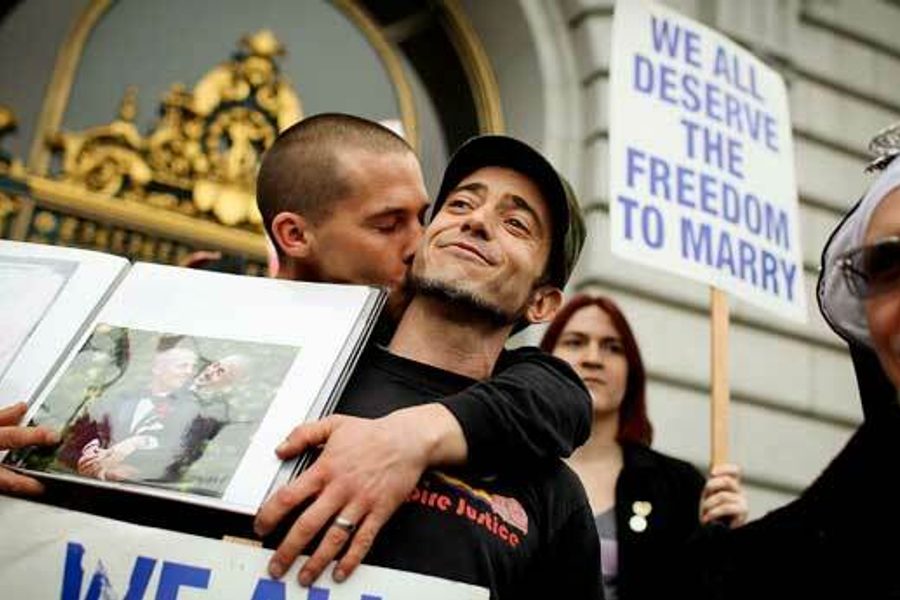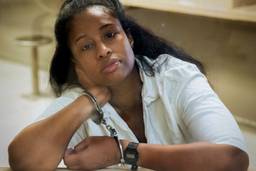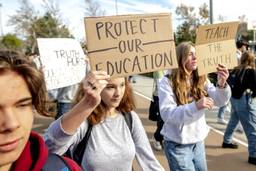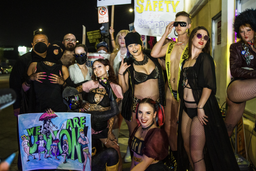
Nearly a month after the death of 17-year-old Trayvon Martin, something unusual happened: The shooting of a black teenager became the subject of national attention. When 911 recordings of the incident were released, they suggested neighborhood watch captain George Zimmerman had not carried out the shooting in self-defense, as he had claimed and as police in Sanford, Fla., had accepted, but had in fact stalked Martin through the gated community where Martin’s father lived on the assumption that the unarmed youth represented a threat. As news of the incident spread, tens of thousands took part in “hoodie marches” protesting the profiling of youth of color and reigniting the discussion of racial inequalities in the criminal justice system.
It is doubtful that the eventual arrest of Zimmerman would have occurred without such mobilization. But can the movement achieve broader aims in the pursuit of racial justice? In These Times turned to three authors and organizers to explore the potential of this movement: Michelle Alexander, legal scholar and author of The New Jim Crow: Mass Incarceration in the Age of Colorblindness; Kali Akuno, director of human rights education at the U.S. Human Rights Network; and Brittney Cooper, a fellow at the Center for Race and Ethnicity at Rutgers University, and co-founder of the blog Crunk Feminist Collective.
What about the Trayvon Martin case has galvanized public and media attention?
Kali: This generation is being bombarded by a post-racial narrative, and this incident was a shock to that narrative. The national attention to Trayvon’s murder has rekindled the people-centered memory of centuries of pain and oppression suffered here in the United States.
Michelle: At the same time, what’s been lost in the conversation is that what happened on that street that night wasn’t aberrational – it was quite normal. What made the situation unusual is that Zimmerman didn’t have a badge with his gun. If he had, we wouldn’t even know Trayvon Martin’s name today.
The primary demand of those pushing for justice for Trayvon has been Zimmerman’s arrest. Now that he has been charged with murder, where could the movement go from here?
Michelle: The goal for advocacy shouldn’t be just for Zimmerman to be found guilty, but for his mindset to be found guilty. In our zeal to see Zimmerman held accountable, we may be missing an important opportunity to have a moment of honest conversation and healing. While listening to an interview with Trayvon’s mother, it occurred to me that perhaps even more than punishment, what she was seeking was restorative justice. She said that she had so many questions that she wanted to ask Zimmerman: Did he understand that Trayvon was just an unarmed teenager? I hope now that Zimmerman has been arrested, we’ll seek to build a movement that isn’t just about locking someone up for as long as possible.
Brittney: At the same time, the thing that’s so profound to me is that it took marches of tens of thousands of people and a petition with two million signatures merely to get an arrest. That bespeaks the challenges that we face in turning this into a larger conversation. We have an inability to see black men as able to be victimized, so we needed all those people in the street just to convince folks that Trayvon was a victim.
This case has also called attention to “stand your ground” laws, with many activists now pushing for their repeal. Is it enough to target policies like these?
Kali: There is a serious crisis confronting the black community that needs to be dealt with on a much more profound level. Research conducted by the Malcolm X Grassroots Movement and the U.S. Human Rights Network has discovered 36 black men and women who have been killed either by police, security guards or self-appointed vigilantes since January 2012. We’re calling for a National Plan of Action for Racial Justice to be created at the federal level and then instituted at every level of government.
Michelle: Viewing one individual law or practice as the cause of Trayvon Martin’s death is very problematic. Our justice system has been infected with the Zimmerman mindset for decades: a mindset that views black men in particular as a problem to be controlled. It has led to the War on Drugs, a “get tough” movement and a prison-building boom unprecedented in modern history. It’s this system that must be the target – not just piecemeal policy reform.
Could this moment help build the movement against mass incarceration, which you famously argue has created a new racial caste system?
Michelle: This incident will only become transformational if people begin to connect the dots between what happened to Trayvon Martin and what’s happening to millions of other folks of color who are cycling in and out of the criminal justice system and are ultimately locked up and locked out. Today, hundreds of thousands of black and brown young men are subjected to the very kinds of interrogations that Zimmerman was trying to carry out because of “stop-and-frisk” policies. But we treat these policies as the price that black men must pay for the security of others.
Trayvon’s death has highlighted how young black men are disproportionately affected by this system. But who else needs to be brought into this movement?
Brittney: One of the challenges of engaging in this narrative of endangered black men – which is a legitimate crisis – is that it makes it more difficult to talk about the fact that the fastest-growing rate of incarcerated folks is black women. But the forms of violence affecting black men have always affected black women as well. When black men are pulled out of communities, that affects black women’s circumstances. Once we do begin to talk about the need for new forms of justice, we’ll have to bring black women’s experiences of violence into the conversation.
Kali: And in addition to black women, one of the fastest-growing areas of incarceration and detainment is in immigrant communities. Massive numbers of folks have been arrested in the past few years, and more than one million deported. We’ve got to make that link in our organizing. The system is not broken. It’s been built to be the way it is. To transform it we have to build multinational, multiracial alliances.
So how can organizers build on momentum and keep this from being treated as an isolated tragedy?
Brittney: One of the challenges of recognizing that we have a new system of racial control, “Jim Crow 2.0,” is that folks are still looking to the leadership models of the previous era – the “great black racial leaders” model of Martin Luther King Jr. and Ralph Abernathy. There’s a lot of community-based organizing that has to happen in order to build momentum for another mass movement. If we focus on empowering communities to think about their problematic laws and how to change policing in their cities, these efforts have the potential to converge. But if we’re looking for a top-down national movement where leaders tell us where and when to march, we’re setting ourselves up for failure.
Michelle: What I want to see is more advocates willing to say the unpopular thing in a time when even speaking about race is viewed as a violation of social etiquette. In the Obama age, it’s easy to be made to feel as though you’re crazy or hysterical when you draw links between individual cases and systemic circumstances. But if we’re going to build this movement, it’s going to take a lot of bold truth-telling that has been missing from public discourse for far too long.
Rebecca Burns is an In These Times contributing editor and award-winning investigative reporter. Her work has appeared in Bloomberg, the Chicago Reader, ProPublica, The Intercept, and USA Today. Follow her on Twitter @rejburns.









